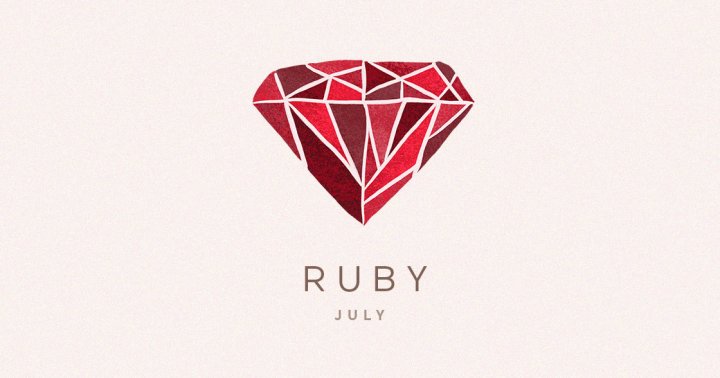Each month of the year has its own designated birthstone (and a birth month flower), and for those born in July, their birthstone is none other than the dazzling ruby. Here’s what to know about this stone, plus how to work with it, according to a crystal expert.
The meaning behind birthstones
Back in the early 1900’s, the birthstones we know today were officially named as such by the National Association of Jewelers in the United States. But before then, however, “birthstones” already had a place throughout history, going all the way back to biblical times.
In the book of Exodus (28:17-20), for example, it’s written that 12 gemstones were fixed on the prophet Aaron’s breastplate. “There were 12 stones, one for each of the names of the sons of Israel, each engraved like a seal with the name of one of the 12 tribes,” it says.
And according Ashley Leavy, founder and educational director of the Love and Light School of Crystal Therapy, birthstones also have roots in Western astrology and Ayurveda. She previously told mbg that the reason the National Association of Jewelers standardized the American birthstones in 1912 was that so many different traditions had different birthstone options.
Today, birthstones are a popular gift option for birthdays, holidays, anniversaries, and more.
Rubies are a red, burgundy, or magenta variety of the mineral corundum. “Corundum is a group of minerals that contains ruby and sapphire,” Leavy explains, adding that the name “ruby” is “really only reserved for the red variety of corundum, and most commonly found in Thailand, Cambodia, Burma, and parts of India.”
Historically, she adds, there’s lore that this gemstone originated by way of mythological beasts, as the third eye of dragons, for example. “Other cultures say it originated as the eyes of Wyverns, and in the East we sometimes see it set into status statues of the Buddha in the brow area, to represent the third eye and reincarnation,” she notes.
In other ancient monarchies, rubies were believed to make kings invincible, offering protection. Its deep red color was related to blood, and some believed it could even heal battle wounds, Leavy explains.
Meanings & symbolism of ruby
Today, we may know that rubies can’t actually stop bleeding, but their association with protection remains, Leavy tells mbg.
Along with that, she notes that this a great stone for increasing your energy, vitality, and motivation. “It’s also great for encouraging exploration of new thoughts and ideas, so if you have been feeling a little bit stuck, boxed in , or lacking some creativity, it really encourages you to shift your perspective and think of things in a new way,” she says.
To that end, she adds, rubies also encourage dynamic thinking, and being able to take a lot of factors and information into consideration. With ruby, she says, you’ll be able to come up with a solution that’s a little more outside of the box.
In addition to that, rubies are closely linked with the fire element, given their red color. As such, the stone relates to Aries, and Leo, both fire signs of the zodiac, with Leo season also beginning in July. Thanks to this connection to fire, it’s excellent for energy and transformation, as well as stimulating one’s creative fire, passion, and alignment with purpose.
As far as taking care of your ruby, cleansing and charging this stone is relatively simple. Leavy recommends opting for any of the preferred cleansing or charging techniques that work for you, though she does not that given its connection to fire and the sun, placing your ruby in the sun for an hour or two would be a great method of cleansing for this stone.
Rubies are gorgeous, energizing stones associated with passion, vitality, and even invincibility. It’s a fitting birthstone, given the intensity of July, though you certainly don’t have to be born in this month to enjoy this stone’s beauty and energy.

